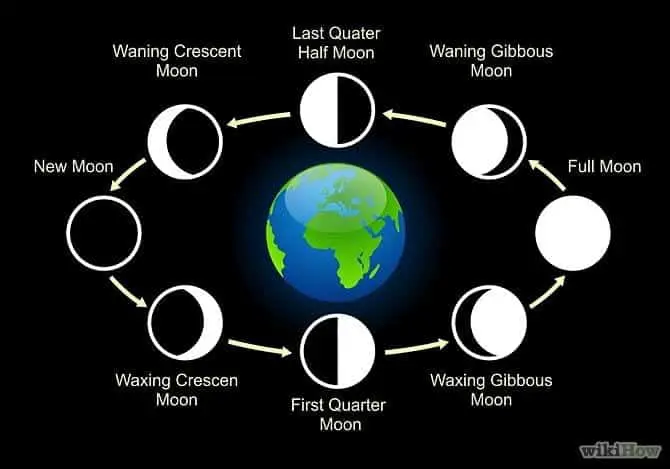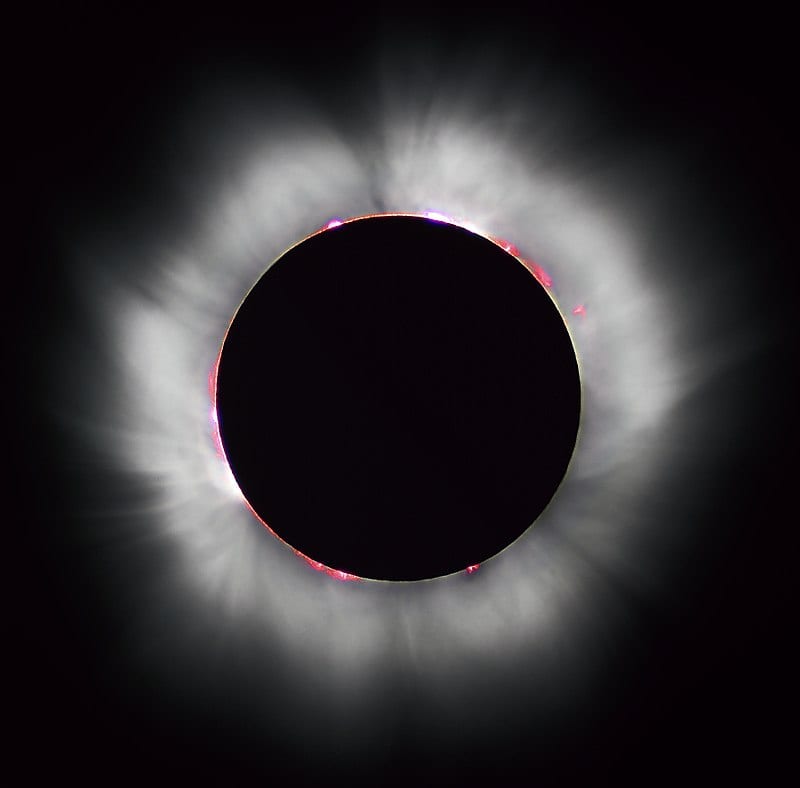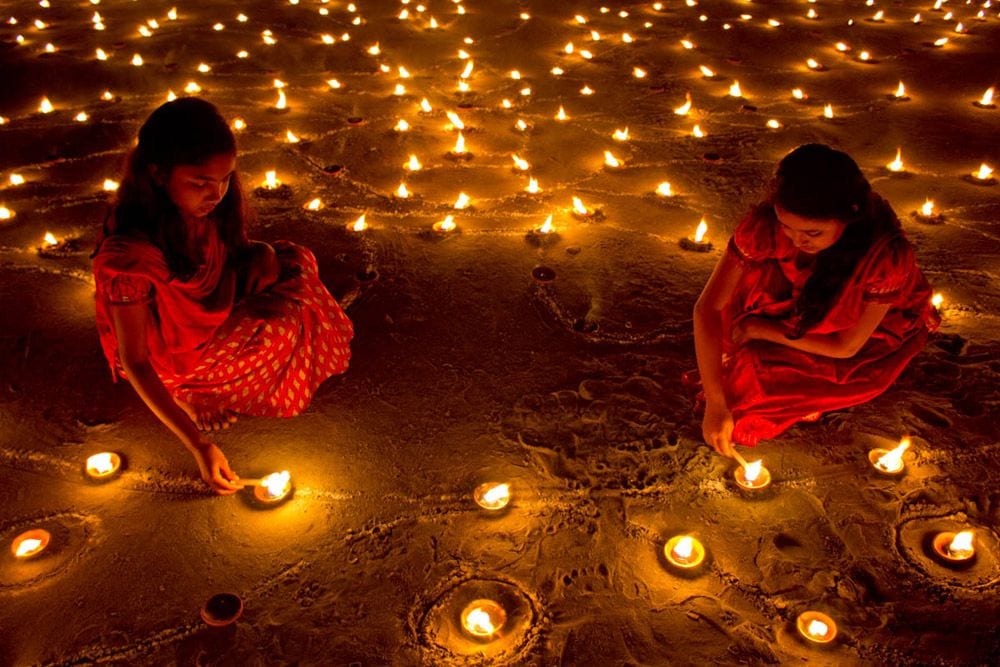What Is A New Moon?
The new moon always occurs when the moon comes between Earth and Sun. Due to the sun-moon conjunction, what we get is a New moon day. In other words, whenever you see that moon is absent from the night sky, this is the day of the New Moon.
During a new moon day, the side of the moon facing Earth is not illuminated by the sunlight due to the alignment between Sun and Moon i.e sun moon conjunction. That’s why the new moon is also called The Invisible Phase Of The Moon.
Highly recommended, Full Moon Calendar 2021 (Dates, Names & Moon Sign – Southern Hemisphere)
Invisible Moon – First Phase Of The Moon
In the first place, if you don’t know; the different shapes of the moon are called phases of the moon. On the other hand, in total; there are 8 phases of the moon. The moon revolves around the Earth in approximately 29.62 days, a period is known as the lunar cycle.

If I talk in a hierarchical manner; the first phase of the moon is called the Invisible moon, or simply a new moon. Apart from the new moon day, other stages of the moon are waxing crescent, First Quarter, Waxing Gibbous, full moon, waning gibbous, last quarter, and, waning crescent moon.
Must Read, Full Moon Calendar 2021 (Dates, Names & Moon Sign– Northern Hemisphere)
What Does A New Moon Look Like?
Well, there is nothing to look around during the new moon phase. I mean, the alignment between the sun, moon, and Earth leaves nothing to look upon.
Hence, from our earthly point of view; what is seen is complete darkness on the surface of the moon. For this reason, the invisible phase of the moon or invisible moon is also known as Dark Moon.
Check out, Why Can’t We See The Dark Side Of The Moon?
Facts About The New Moon
If I want to, I can conclude that the period between new moons is 29.62 days i.e a Lunar Month. One of the most important new moon facts is that only on a new moon day, a Solar Eclipse can occur.

But this does not mean that Solar Eclipse will occur on every New Moon Day. In short, a Solar Eclipse generally occurs at least 2 times or at most 5 times a year (which is very rare). With this in mind, you can think that on average, Earth experiences 2.4 solar eclipses every year.
Editor’s Choice: When is the Next Partial Solar Eclipse in 2022? (Visibility Map & Table)
New Moon vs Full Moon
Well, there could be so many differences between the new moon and the full moon. I can’t explain all of them in this article. But I will tell you the best ones.
- On New moon day, the visibility of the moon is ZERO. Meaning you see nothing of the moon. On the contrary, during a full moon, the visibility of the moon is full. Meaning the entire moon’s surface is lit or 100 percent illuminated.
- Only on a new moon day, a Solar Eclipse can occur. On the other hand, only on a full moon day, a lunar eclipse can occur.
Check out, Difference Between Solar and Lunar Eclipse (Tabular Form)
Amavasya Or New Moon
Just like in Indian culture, we Indians call a full moon as Purnima. Likewise, we call the New moon Amavasya. Well, Amavashaya is a Sanskrit word, that literally means there is no moon. Meaning, the moon is invisible in the night sky.

In other words, I can conclude that; the new moon in Hindi is called Amavasya. In fact, there are so many different festivals that are being celebrated across the Indian subcontinent on every new moon day. One of the most famous ones is India’s Festival of Lights i.e Diwali.
Recommended, Why We Celebrate Maha Shivratri In My View
Dipawali symbolizes the spiritual “victory of light over darkness, good over evil, and knowledge over ignorance”. This year Diwali comes on 14 November 2020 which is also a day of a new moon in the month of November.
Must Read: Top 6 Solar Eclipse Facts in SIX Minutes
That’s it for this post. If you like this article, share it if you like it, like it if you share it. You can also find us on Mix, Twitter, Pinterest, and Facebook. Hey man, If you have come this far, do give us feedback in the comment section. It would make my day. Cheers!!!

Nice article was helpful